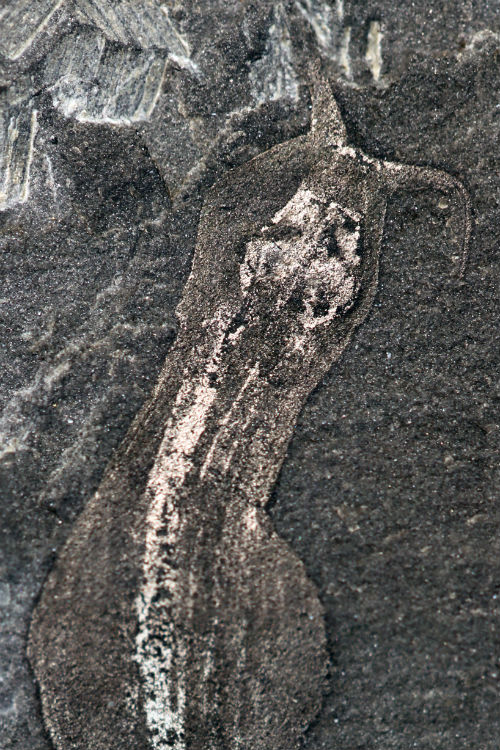Ribbon worm? Arrow worm? Since the discovery of its fossil over a century ago, paleontologists have speculated about what branch of evolution Amiskwia sagittiformis was on.
Charles Doolittle Walcott, who first described it, compared it to the a group of ocean-dwelling worms that are fierce predators, equipped with an array of spines on their head for grasping small prey - modern arrow worms (chaetognaths), but later scientists could not find evidence of the canonical grasping spines so they believed instead it might be a a ribbon worm, or its own distinct lineage only distantly related to anything that resembles it today.
The paleontologist Stephen Jay Gould speculated that these organisms did represent extinct body plans that are no longer seen today and that if we were to wind back the clocks to the Cambrian, more than 500-million-years-ago, and re-run the tape of life, then perhaps the animals alive today would look very different.

Amiskwia sagittiformis from the Burgess Shale, ~508 million years old, preserving bilateral jaw elements inside its head. These jaw elements resemble those seen in rotifers and gnathostomulids, while the body resemble arrow worms. Credit: Luke Alexander Parry/University of Bristol—Yale University
A new study says there is accuracy in many arguments. By coating a specimen with with ammonium chloride smoke to make the relief of the fossil stand out they could see that in the head was a pair of robust elements. Interpreting these structures as a set of jaws, their resemblance led the authors to think of a group of animals, called gnathiferans, which include rotifers, gnathostomulids and micrognathozoans. These animals are microscopic worms, with a distinctive internal jaw apparatus. Amiskwia, they say, has the jaw of a gnathiferan but the body of an arrow worm.
A relationship between arrow worms and gnathiferans based on their shared possession of a chitin jaw apparatus had been suggested before but lacked phylogenetic analyses of DNA. More recently biologists found arrow worms to be more and more closely affiliated to the Gnathifera in the Tree of Life. Arrow worms share a duplication of the important Hox genes with a gnathiferan, the rotifers.
Citation: Jakob Vinther, Luke A.Parry, 'Bilateral Jaw Elements in Amiskwia sagittiformis Bridge the Morphological Gap between Gnathiferans and Chaetognaths', Current Biology February 21 2019, DOI: 10.1016/j.cub.2019.01.052


